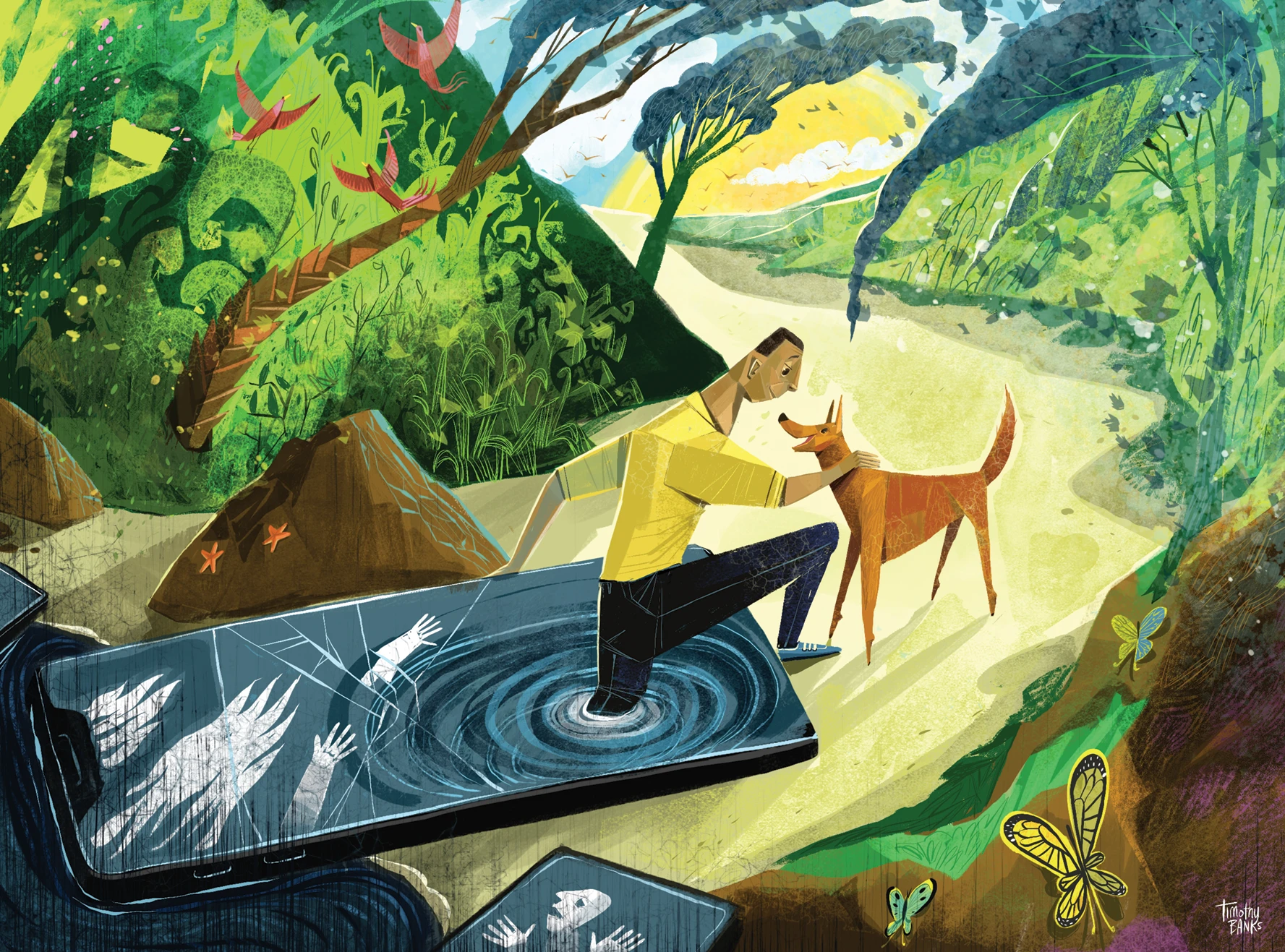Four-Step Program

More than 70% of American adults are concerned about how technology affects their mental health and personal relationships.
Our recent research studied the digital detox journey, where people take a much-needed break from digital consumption, aiming to uncover what supports or sabotages those seeking digital well-being. Our findings highlighted four key strategies to improve this journey:
1. Finding replacement practices
Feelings of withdrawal during a digital detox are quite common. For many, reaching for their phones and scrolling has become such a ritual that they often don’t realize they are doing it. Finding an alternative to distract your mind and occupy your hands can be crucial during a digital detox. These replacement practices often involve hobbies or activities that result in play. As adults, people sometimes forget what it feels like to have fun. By engaging in play for its own sake, you can significantly reduce stress levels and boost your digital well-being.
2. Shoring up social bonds
Since humans are social creatures, our innate desire for connection combined with people’s reliance on technology can lead to feelings of FOMO – fear of missing out – and anxiety during a digital detox. Although we’re a more connected society, relationships suffer and people are lonelier than ever.
During a digital detox, it is vital to fill your cup with community. We recommend engaging in a digital detox alongside others, because FOMO may rear its ugly head if your friend pulls out their phone during a night out.
3. Emphasizing mindfulness
In today’s fast-paced environment, finding a moment to pause can feel impossible. Many don’t have moments to be alone with their thoughts. Yet, the ability to just be allows time to reflect, helping you consider what makes you happy and healthy.
In our study, yoga and meditation were common ways that detoxers found moments to become more aware of their own thoughts, which helped foster more intentional behaviors. Finding moments where you can step away – to be still and silent – can provide a much-needed recharge.
4. Viewing digital well-being as an ongoing journey
Ultimately, digital well-being is a journey. It is not a checklist that, once completed, means you are fulfilled.
A successful detox often leaves people feeling introspective and curious. Relapses are common, especially if detoxers don’t set and monitor goals. Importantly, your needs change and evolve over time. What works now might not be what you need in the future.
We recommend identifying specific goals related to your own digital well-being. These aren’t productivity goals but goals to be unproductive. Whether planning a weekly game night with friends or taking a 10-minute walk without your phone, making time to unplug is worth it in the long run.
People are not machines, so recognizing your limits and finding ways to reconnect with yourself and others during a detox can enhance your sense of humanity and digital well-being.